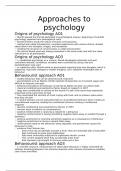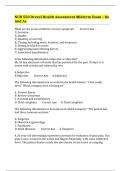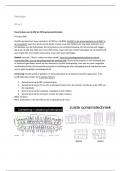Summary
Summary AQA A-level psychology approaches to psychology paper 2 notes
- Course
- Institution
A document containing all the information necessary for the approaches to psychology section of AQA A-level psychology paper 2. The information is divided into AO1 (knowledge) and AO3 (evaluation), and incudes all the names and dates related to the knowledge and evaluation points. I'd recommend usi...
[Show more]






